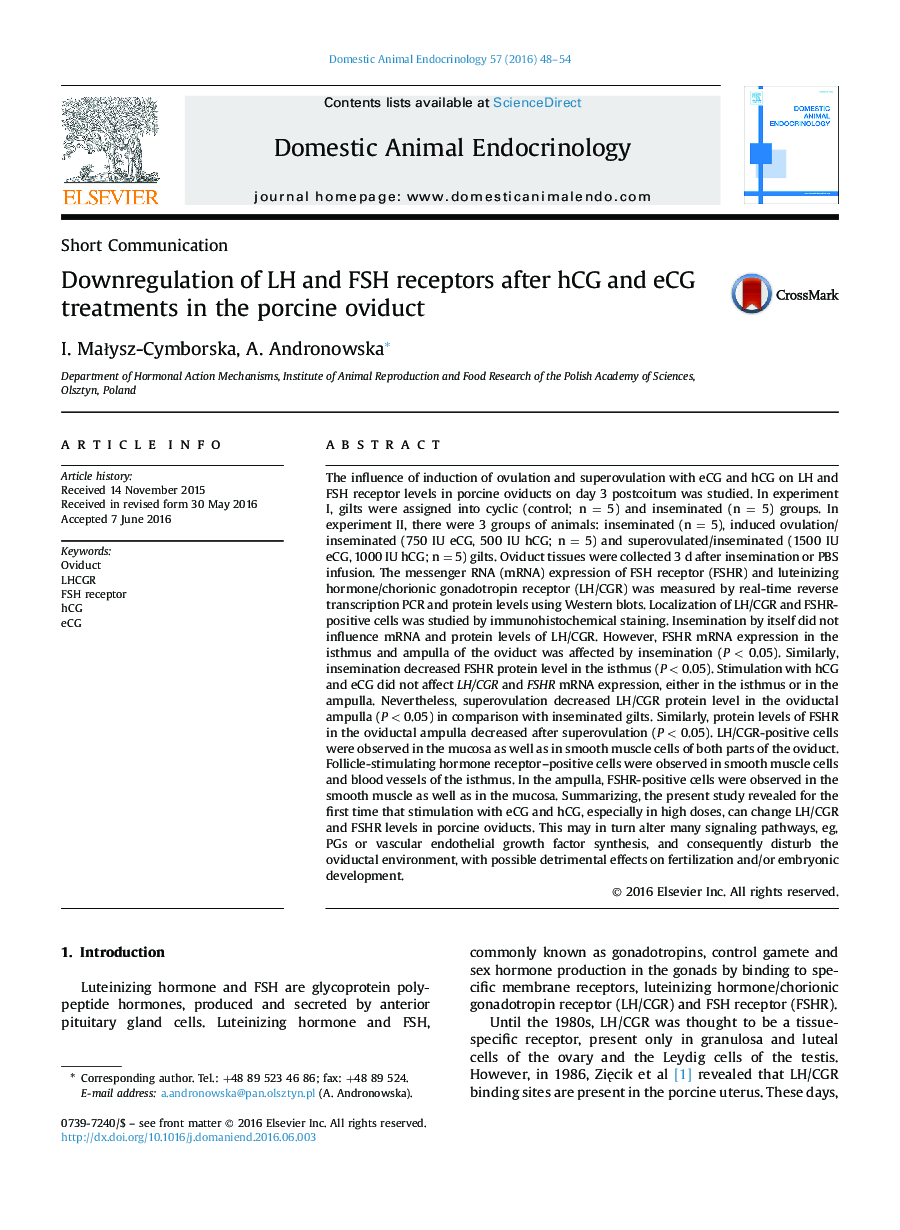| Article ID | Journal | Published Year | Pages | File Type |
|---|---|---|---|---|
| 2393408 | Domestic Animal Endocrinology | 2016 | 7 Pages |
•Insemination decreases FSH receptor mRNA and protein level in porcine oviducts.•LHCGR and FSHR protein levels are downregulated by hCG and eCG in the oviductal ampulla.•LHCGR and FSHR-positive cells are present in the smooth muscle cells of oviductal wall.
The influence of induction of ovulation and superovulation with eCG and hCG on LH and FSH receptor levels in porcine oviducts on day 3 postcoitum was studied. In experiment I, gilts were assigned into cyclic (control; n = 5) and inseminated (n = 5) groups. In experiment II, there were 3 groups of animals: inseminated (n = 5), induced ovulation/inseminated (750 IU eCG, 500 IU hCG; n = 5) and superovulated/inseminated (1500 IU eCG, 1000 IU hCG; n = 5) gilts. Oviduct tissues were collected 3 d after insemination or PBS infusion. The messenger RNA (mRNA) expression of FSH receptor (FSHR) and luteinizing hormone/chorionic gonadotropin receptor (LH/CGR) was measured by real-time reverse transcription PCR and protein levels using Western blots. Localization of LH/CGR and FSHR-positive cells was studied by immunohistochemical staining. Insemination by itself did not influence mRNA and protein levels of LH/CGR. However, FSHR mRNA expression in the isthmus and ampulla of the oviduct was affected by insemination (P < 0.05). Similarly, insemination decreased FSHR protein level in the isthmus (P < 0.05). Stimulation with hCG and eCG did not affect LH/CGR and FSHR mRNA expression, either in the isthmus or in the ampulla. Nevertheless, superovulation decreased LH/CGR protein level in the oviductal ampulla (P < 0.05) in comparison with inseminated gilts. Similarly, protein levels of FSHR in the oviductal ampulla decreased after superovulation (P < 0.05). LH/CGR-positive cells were observed in the mucosa as well as in smooth muscle cells of both parts of the oviduct. Follicle-stimulating hormone receptor–positive cells were observed in smooth muscle cells and blood vessels of the isthmus. In the ampulla, FSHR-positive cells were observed in the smooth muscle as well as in the mucosa. Summarizing, the present study revealed for the first time that stimulation with eCG and hCG, especially in high doses, can change LH/CGR and FSHR levels in porcine oviducts. This may in turn alter many signaling pathways, eg, PGs or vascular endothelial growth factor synthesis, and consequently disturb the oviductal environment, with possible detrimental effects on fertilization and/or embryonic development.
